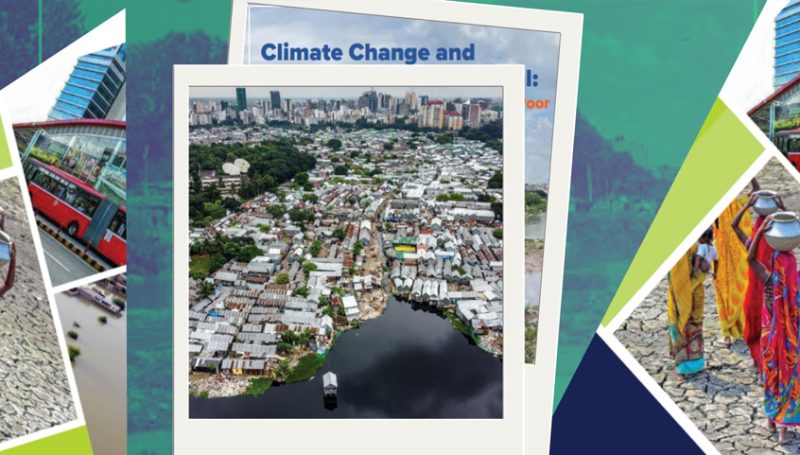Climate Change Adaptation: Building Resilient Cities in South Asia

Climate change is a pressing issue that poses significant challenges to urban areas in #SouthAsia. The region’s rapid #Urbanisation, coupled with the impacts of climate change, has made it imperative to focus on building resilient cities. Reports from the Climate Action Network South Asia (CANSA) highlight the need for innovative solutions and proactive measures to address these challenges.
Urbanisation and Climate Vulnerability
South Asia is experiencing rapid urbanization, with a significant portion of its population now residing in cities. This rapid growth has led to unplanned urban development, exacerbating vulnerabilities to climate change. Informal settlements, often located in hazard-prone areas, are particularly at risk.
Cities in South Asia are already feeling the effects of climate change, including increased frequency and intensity of extreme weather events, sea-level rise, and heat waves. These impacts are affecting the lives and livelihoods of urban residents, underscoring the urgent need for adaptation strategies.
Building Resilience through Adaptation
#Adaptation strategies in South Asian cities are crucial for building resilience to climate change. This includes investing in climate-resilient infrastructure, such as flood protection measures and sustainable urban planning. It also involves empowering communities to cope with climate risks and providing access to climate information services.
Several cities in the region are implementing innovative measures to cope with the impacts of climate change:
- Green Infrastructure: Cities like Dhaka and Kolkata are promoting green infrastructure, such as rooftop gardens and urban parks, to mitigate the urban heat island effect and reduce flooding risks.
- Water Management: In cities like Chennai and Karachi, water management is a key focus. Rainwater harvesting systems, improved drainage, and wastewater treatment plants are being implemented to address water scarcity and flooding issues.
- Urban Planning: Many cities are revising their urban planning policies to incorporate climate-resilient design principles. This includes zoning regulations that limit construction in flood-prone areas and promote green spaces.
- Transportation: Sustainable transportation systems, including the promotion of public transportation and cycling infrastructure, are being developed to reduce greenhouse gas emissions and improve air quality.
- Disaster Risk Reduction(#DRR): Cities are investing in early warning systems and emergency preparedness plans to mitigate the impacts of extreme weather events, such as cyclones and floods.
Policy Recommendations
CANSA’s reports on Nepal, Bangladesh and Pakistan emphasize the importance of integrating climate considerations into urban planning and development policies. This includes mainstreaming climate resilience in infrastructure projects and promoting sustainable practices. Strengthening disaster risk reduction measures is also crucial.
Communities play a crucial role in building resilience. The QoC-CANSA fellowship has also produced a significant body of well-researched work compilation that have explored the challenges South Asia’s cities have been facing, and the need to explore innovative solutions to climate change adaptation. Their work focuses on empowering communities through capacity-building and supporting local initiatives.
To enhance climate resilience in South Asian cities, policymakers should consider the following recommendations:
- Integrate Climate Considerations: Incorporate climate change considerations into urban planning and development policies to ensure that infrastructure projects are resilient to climate impacts.
- Promote Green Infrastructure: Encourage the development of green infrastructure, such as green roofs and permeable pavements, to reduce the urban heat island effect and enhance water management.
- Enhance Disaster Preparedness: Strengthen disaster preparedness and response mechanisms to reduce the impact of extreme weather events on urban populations.
- Invest in Sustainable Transportation: Promote sustainable transportation options, such as public transportation and non-motorized transport, to reduce greenhouse gas emissions and improve air quality.
- Empower Local Communities: Empower local communities to participate in decision-making processes and implement community-based adaptation strategies.
Way Forward for Climate-resilient Cities
Climate change adaptation is essential for building #ResilientCities in South Asia. By investing in sustainable development practices, empowering communities, and adopting robust policy frameworks, cities can effectively mitigate the impacts of climate change and ensure a sustainable future for their residents.
By Purnima Joshi , Communications Coordinator , CANSA.
#Adaptation #DRR #ResilientCities #SouthAsia #Urbanisation




